We are delighted to announce that the drone component of the Odyssey2025 Project in Chad led by Humanity & Inclusion/Handicap International (HI) has been awarded a €1,000,000 EIC Horizon (Horizon 2020) Prize for Affordable High-Tech for Humanitarian Aid.
The project was based on the challenge of finding practical, innovative ways to help improve safety, reduce costs and speed up the process in dealing with post-war landmine and explosive ordnance (EO) contamination in developing countries.
More than 100 million landmines and other items of explosive ordnace (EO) are still scattered around the world today, posing unspeakable threats to human and animal life. Such a devastating legacy of war maims and kills, stifles the capacity to produce food and blocks access to infrastructure and services including; schools, water, electricity and transport for decades after conflict has ceased. As a result, inequities are fostered and local communities fearing for their physical, economic and psycho-social well-being are further isolated.
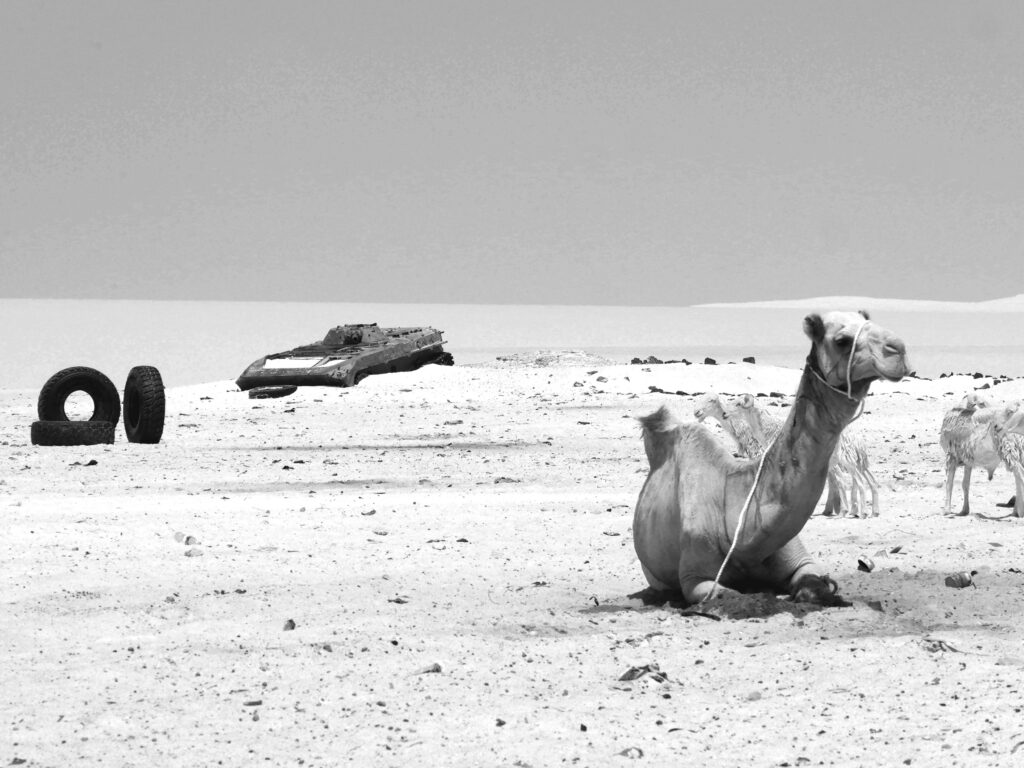
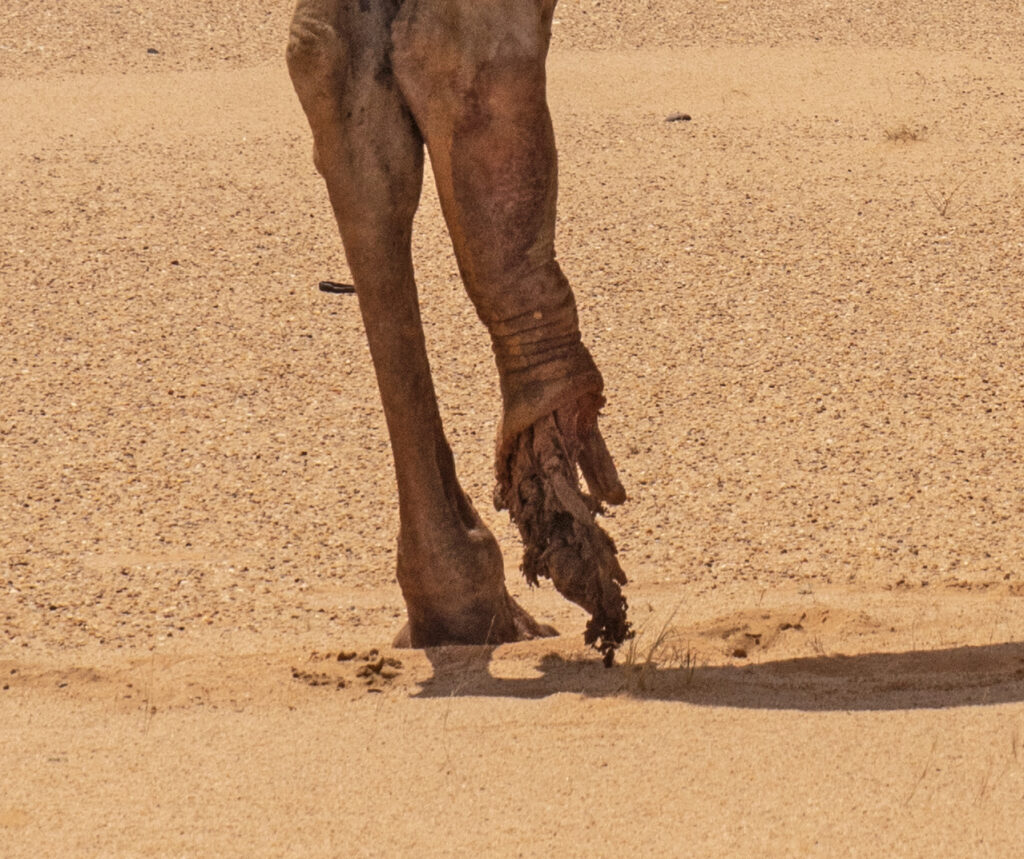
John Fardoulis from Mobility Robotics was the drone lead and primary facilitator, developing strategy and implementing drone work packages for the Odyssey2025 Project.
HI contracted Fardoulis and Mobility Robotics as a project partner to leapfrog their position in the HMA sector. Fardoulis/Mobility Robotics facilitated the creation of a drone strategy in Chad which transformed HI from being an operator without any prior experience, to becoming a world leader in using drones in HMA during 2019-2020.
Winning the EIC Horizon Prize in September 2020 was proof of the results provided by Fardoulis/Mobility Robotics. Fardoulis wrote more than 80% of the EIC Prize application for HI, and was an expert who answered questions by EIC jurors during the final panel review session.
Fardoulis/Mobility Robotics was responsible for; drone innovation strategy creation, methodology design, applied research, training and field validation – using very specialized skills and expertise which enabled HI to achieve a real world impact. HI gained access to Mobility Robotics intellectual property and Fardoulis’ expertise in the fields of: science in extreme environments, strategic planning, remote-sensing, GIS/cartography, drone operations/service provision, aerospace engineering & robotics, procurement, computing, data processing, training, outreach and communication.
Work packages included;
Institutional support: for national, regional and local authorities – especially in developing a standard operating framework, training and competency requirements for drone operators in Chad. Drafting standards based on best practice around the world. There are no formal drone regulations in Chad and drone usage is almost non-existent, hence institutional support was critical as part of a partnership with national, regional and local authorities.
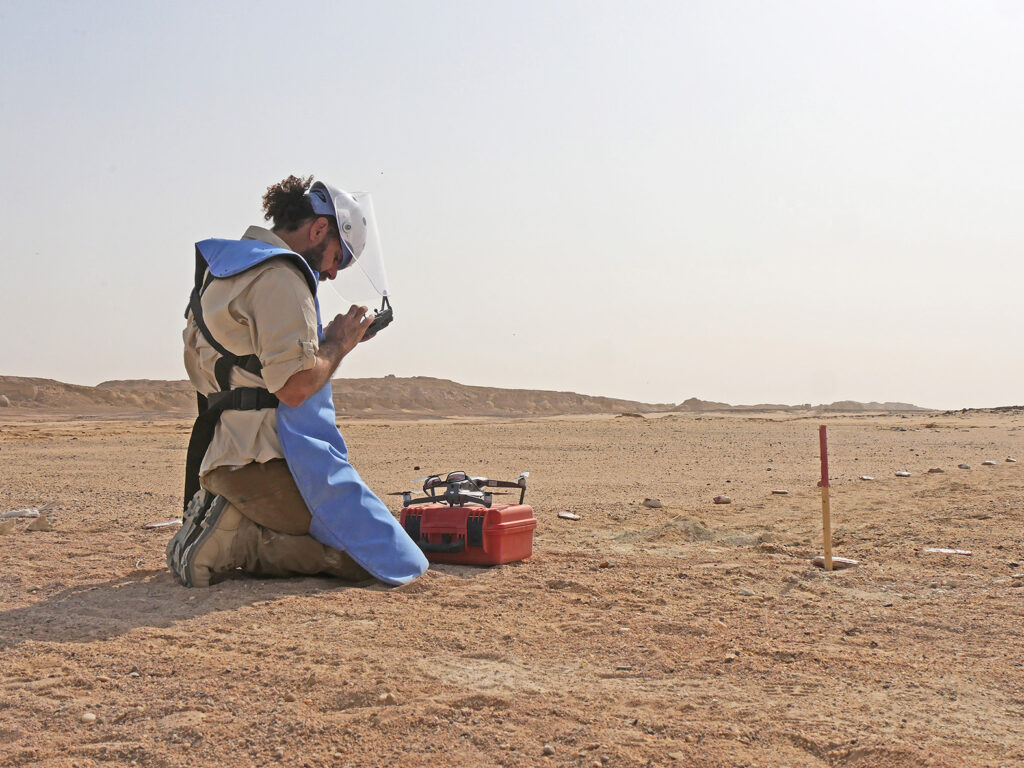
Fardoulis conducted embedded field trials at more than 50 locations – in extreme Sahara Desert conditions – at minefields and suspected hazardous areas. More than 50 linear kilometres of minefields and suspected hazardous areas were mapped from small drones (a world first at such a scale), as well as extensive thermal/LWIR imaging field validation at real minefields. Camping inside active minefields in the desert at times, during 51 degree C heat, travelling for days in places without formal roads, coping with water and food challenges, as well as violent sandstorms.
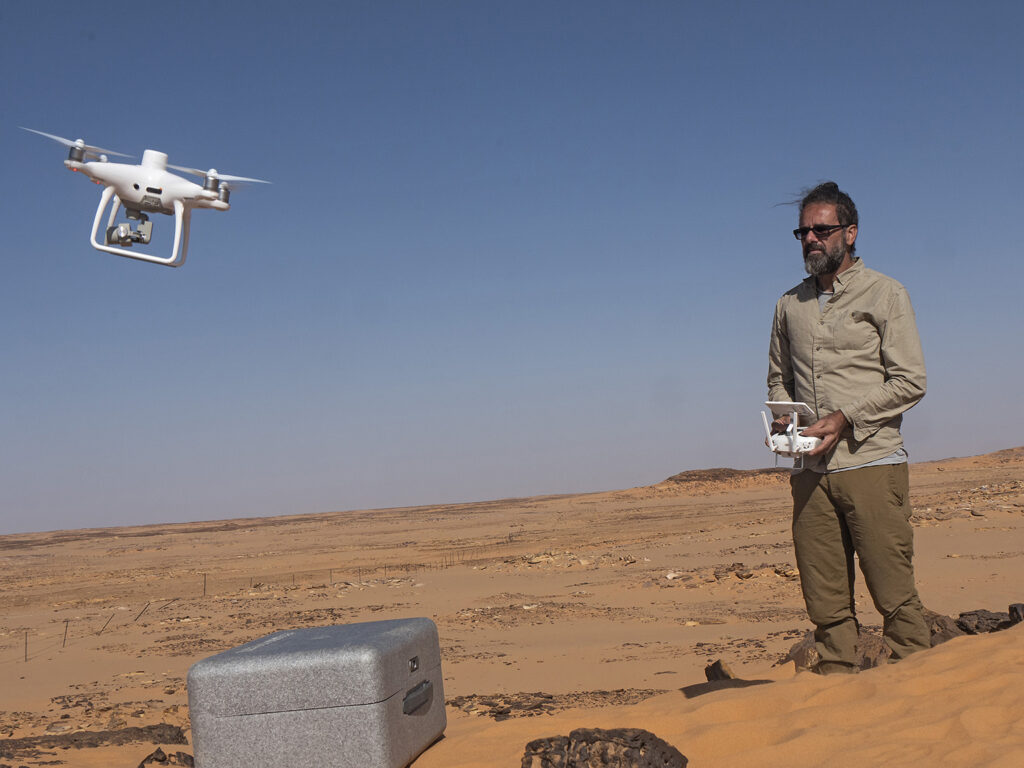
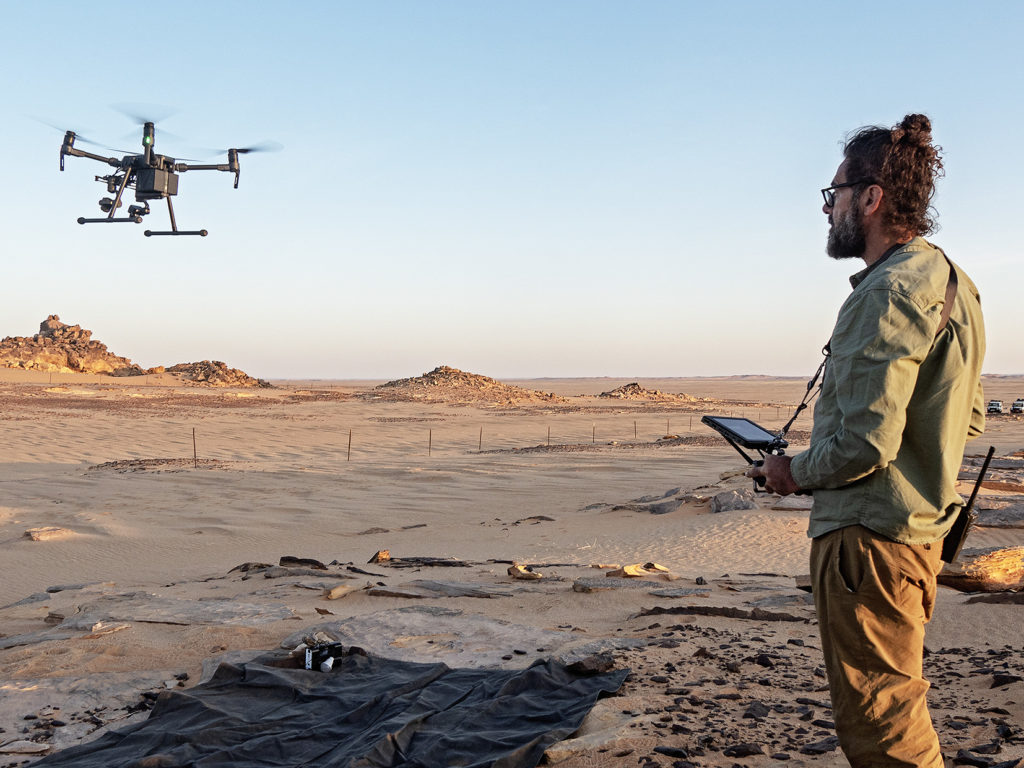
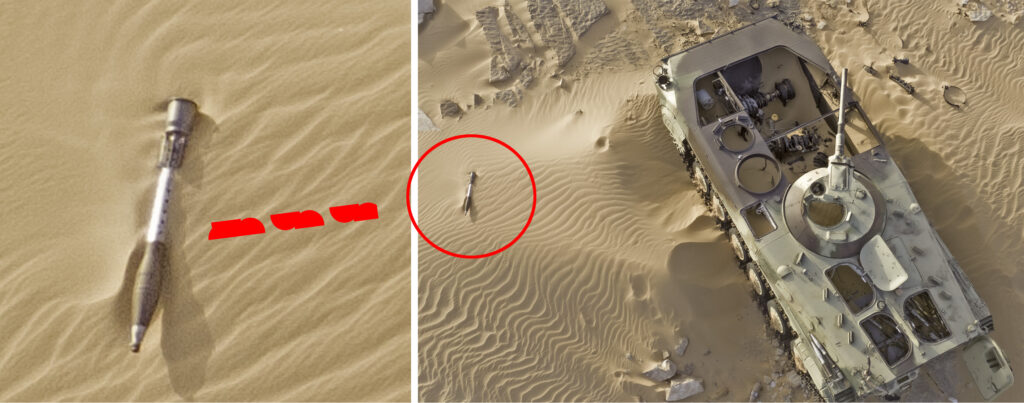
Training national indigenous staff in the use of drones – assuring their competency and abilities to independently operate drones under stressful conditions: at minefields and other hazardous areas. Two humanitarian mine action (HMA) drone operator diploma level training courses were written and delivered.
The Level 1 course was an equivalent of a UK CAA PfCo, USA Part 107, Australian RePL. Level 2 provided skills in flight planning by creating polygons in Google Earth and conducting automated flights, closer proximity operations, photogrammetry processing, creating GIS/Google Earth outputs, exporting imagery outputs for cartography, plus a practical first level of data analysis.
Diplomas were endorsed and jointly issued by the high commission for mine action in Chad, the HCND.
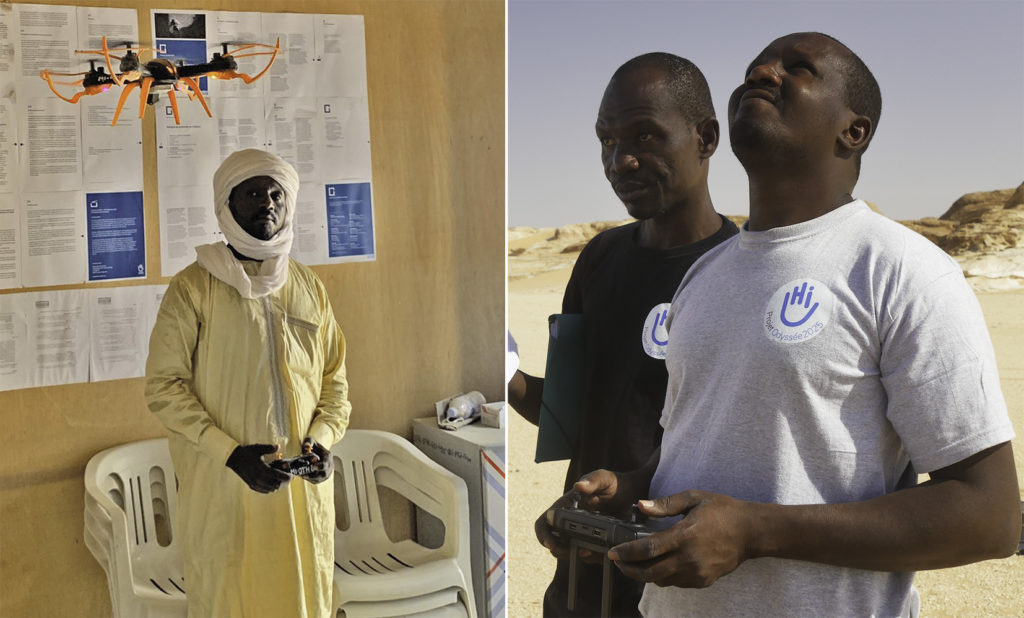

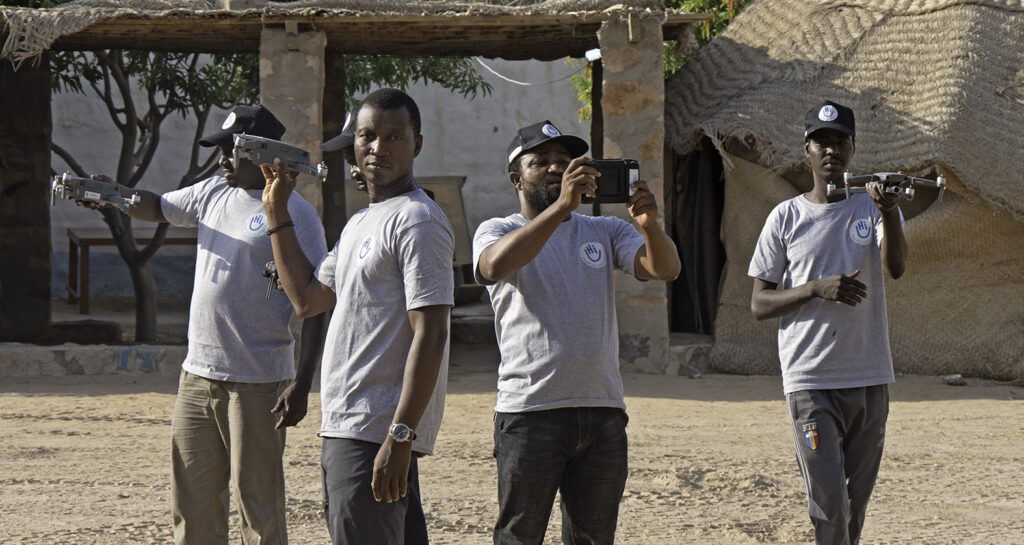
Equipment & technology selection: particularly the frugal use of off-the-shelf camera drones for inspection of, and mapping minefields. Using relatively low cost, off the shelf consumer equipment means: compact designs, an accelerated launch, ease of use, the ability to scale up, the ability to run over a shorter product life cycle, and greater flexibility regarding repairs and maintenance.
There were also responsibilities in selecting more advanced equipment – such as thermal imaging, survey and industrial drones and payloads. IT hardware and software were also selected for data processing – such as a powerful desktop workstation designed for use at a semi-offline desert base and powerful gaming laptops for use in the field.
Novel research: jointly achieving a world-first with HI – in using small drones to locate buried landmines in the Sahara Desert using thermal/LWIR imaging. At live, in-situ 30-year-old legacy minefields. Not just proof-of-concept but field validation, locating the position of more than 2500 active landmines across ten different locations. This moved the needle in a practical way after 20+ years of speculation by researchers.
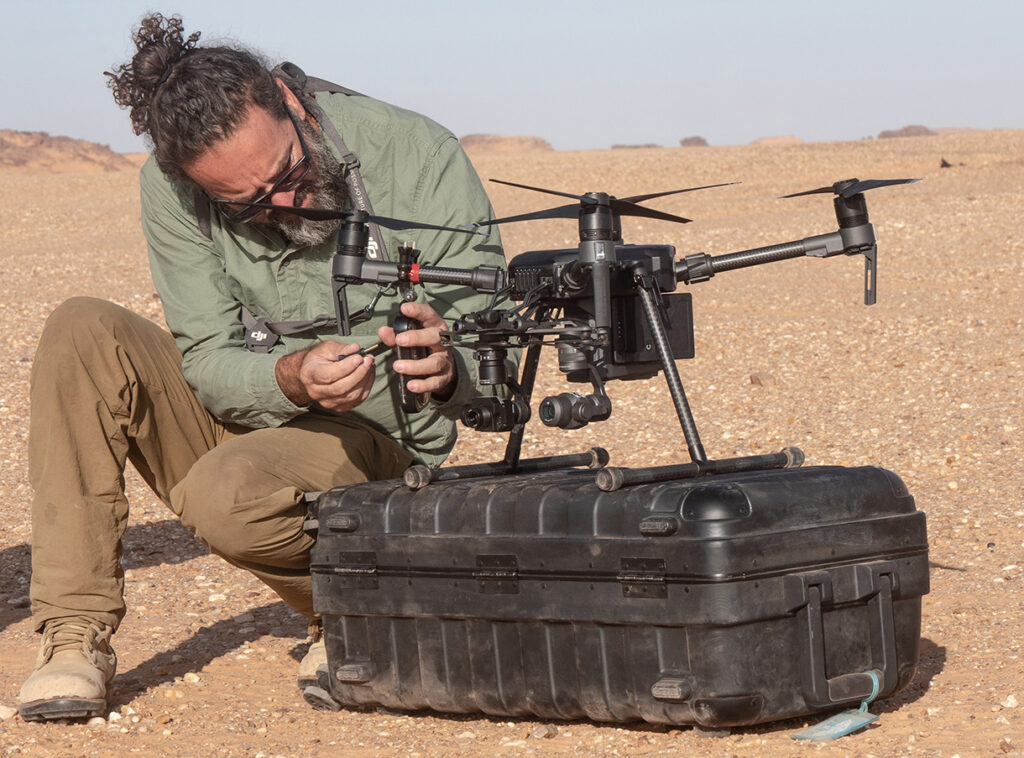
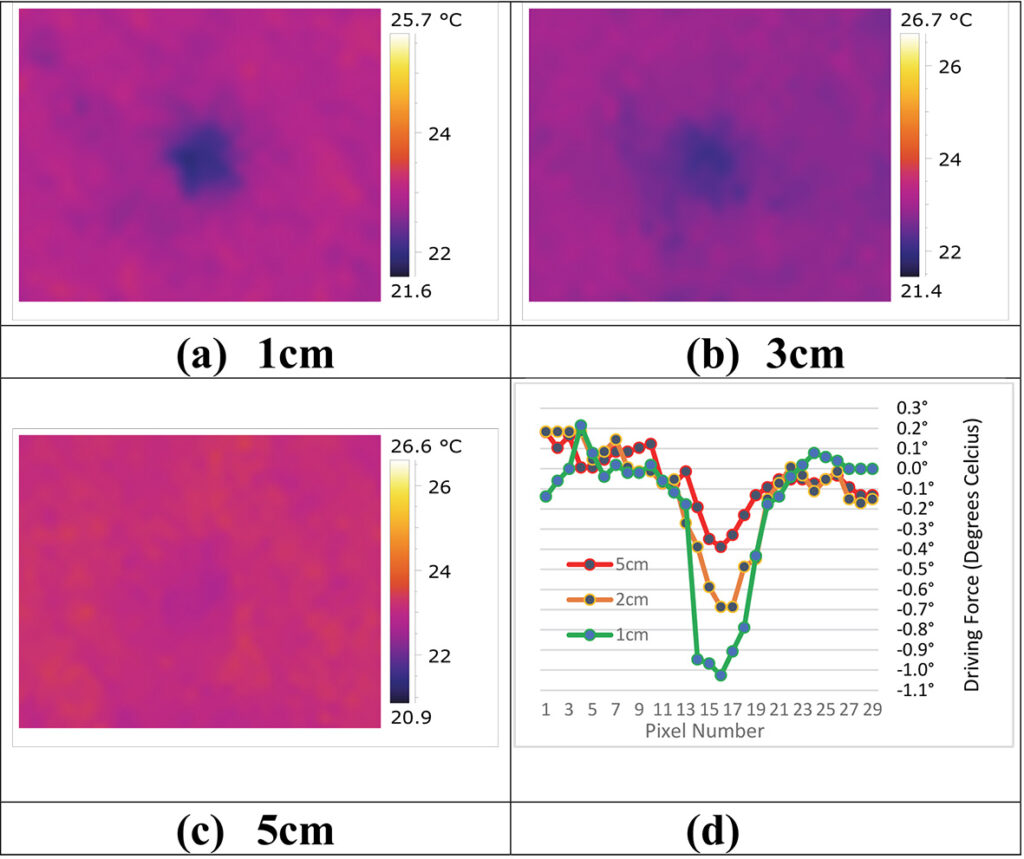
Another breakthrough was in the design of an automated static field test site providing very high spatial and temporal resolution thermal/LWIR imaging data (capturing data 24 hours a day, 7 days a week). It was designed and prototyped in Australia, then validated at actual minefields in the Sahara Desert, 300km south of the Libyan border with Chad. Such field test sites could be deployed in dozens of arid/semi-arid locations around the world to determine whether thermal/LWIR imaging is viable in each location. Being able to pinpoint where contamination exists in using a near-earth form of remote-sensing such as thermal/LWIR imaging from small drones could save millions of dollars and speed up remediation processes by years.
Advanced flight operations: were undertaken successfully and safely by Mobility Robotics which included 50+ small drone missions over minefields at night. Plus beyond visual line sight (BVLOS) operations over minefields during daylight hours and at night.
Pathways to impact: authoring two peer-reviewed journal articles explaining how breakthroughs were made under actual field conditions (in the desert with real landmines – real explosive hazards), a review article examining state-of-the-art knowledge regarding the use of thermal/LWIR imaging – outlining the direction the HMA sector should take to move forward, and several other articles currently in the pipeline. The greatest immediate impact was by shifting from a need to employ foreign staff to capture visual imagery from small drones, to creating local competency – where equipment and skills transfer was provided in-country.
Longer term, proving field validation that thermal/LWIR imaging is viable for locating buried landmines from small drones will also impact the humanitarian mine action (HMA) sector in a positive way.

Advocacy & outreach: at local, regional and national levels in Chad. Also, internationally – providing hard evidence to help the HMA sector gain confidence in the use of small drones in hazardous areas around the world.
The EIC Horizon prize was awarded due to being the best entry in the Open category, addressing the following criteria:
1. Being a new solution tested successfully and safely in a real environment, with a demonstrated potential of adaptability and scalability under different humanitarian aid settings
2. Quality and sustainability of the solution based on the frugal application of advanced technologies
3. Affordability and cost-effectiveness (for beneficiaries and organisations responding to crises)
4. Engagement with end users and solution responding to the needs of those in a most vulnerable situation (taking age, gender, disability and minority into consideration) and perspective of a business case
We are extremely grateful to the European Commission, EIC staff and judges for awarding us such a prestigious prize.
The Odyssey2025 Project would not have been possible without the donor, the Belgian Ministry of Foreign Affairs (MFA). All work took place under the auspices (and generous support) of the high commission for demining in Chad, the HCND.
Thanks are also in order to HI staff, particularly members of the team in Brussels, Lyon, Chad and PRODECO staff who helped make things possible on the ground, often overcoming gargantuan logistical challenges.
As a small Australian company, it was a privilege to become a catalyst in using small drones to help make the world a better place, applying specialized skills and knowledge: in practical ways, a long way from home – in the Sahara Desert.
Receiving such recognition from the European Commission is a huge honour, which validates how drone work during the Odyssey2025 project was truly innovative and achieved a real-world impact for vulnerable people.